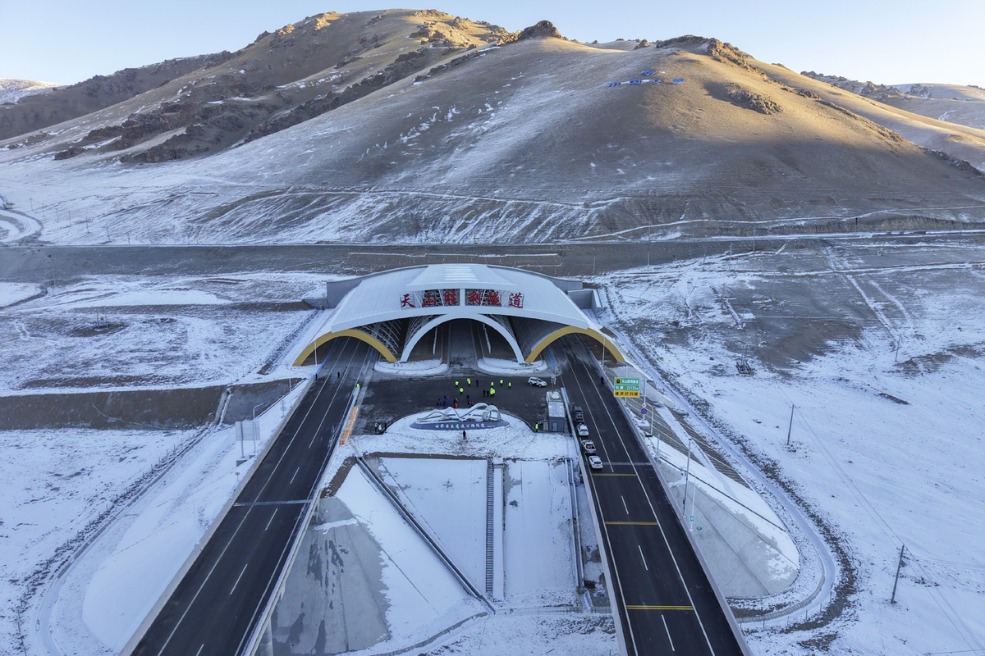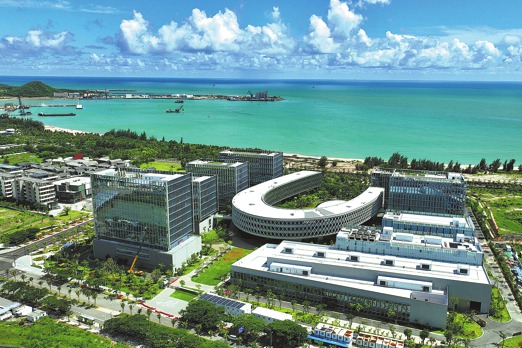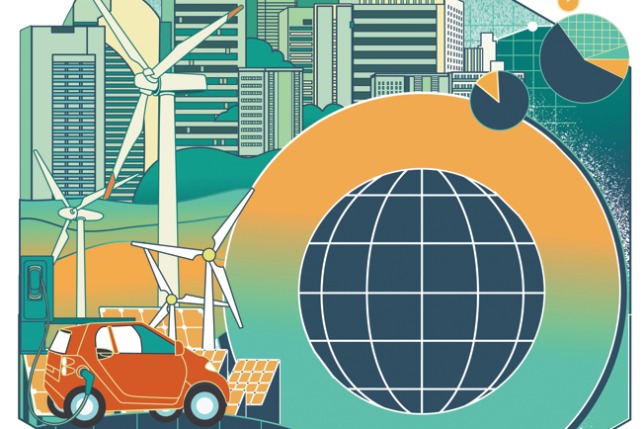Pressed for time


A progress in reducing greenhouse emissions is inadequate, more must be done to pool ideas and act fast
World leaders are attending the 28th Conference of the Parties to the United Nations Framework Convention on Climate Change (COP28) in Dubai from Nov 30 to Dec 12 to take stock of progress toward limiting the rise in atmospheric temperatures to 1.5 C above pre-industrial levels and debate what more should be done.
We already know that progress in reducing emissions of carbon dioxide and other gases that are causing global warming is inadequate. The United Nations Environment Programme Emissions Gap Report 2023 forecasts that without more effective action, the Earth is on track for 2.9 C warming this century.
The consequences of that would be catastrophic, for each and every one of us. To avoid this disaster, humanity needs to do far more and far faster to cut emissions. But that's not all. Today, the level of CO2 in our atmosphere is already more than 50 percent above its pre-industrial level. This is causing more extreme, more frequent episodes of severe weather around the world.
The consequences are obvious for all to see, in China and elsewhere. Storms, floods, and droughts are causing widespread destruction, costing lives, and putting livelihoods at risk. We need to prepare for a future of climate change and unstable weather. And, most urgently, we need to adapt the places where people are most at risk: our towns and cities.
Around 60 percent of the Chinese people live in cities. China's low-lying, densely populated coastal cities are estimated to house one-fifth of its population and generate one-third of its GDP. They already experience frequent flooding, storm surges, and erosion.
But many inland cities are also vulnerable after decades of rapid construction and expansion. Lives, homes, jobs and hard-won prosperity are all in danger. Unabated, climate change could lead to estimated GDP losses of 0.5-2.3 percent as early as 2030. This means that adaptation should not be seen as a cost, but as an investment in our future well-being and economic resilience. Estimates suggest that every US dollar invested in adaptation could result in up to $10 of economic benefits.
Wisely, China is scaling up adaptation through its National Climate Adaptation Strategy. Following on from a radical 2013 plan to tackle air pollution, this seeks to improve early warning of extreme weather and put a nationwide climate impact and risk assessment system in place by 2035.
Part of this initiative is a program of 28 climate-resilient pilot cities, where strategies to adapt urban areas to more extreme weather will be developed and tested.
The Global Center on Adaptation is contributing to this roll-out, working with coastal cities as they seek to strengthen climate-resilience capacity by planning, designing and implementing targeted policies and programs. Our aim is to share the knowledge we have gleaned in our low-lying home city of Rotterdam in the Netherlands, and elsewhere in our work around the globe, while simultaneously making the learning accumulated in China available to the leaders and citizens of other cities wrestling with the challenge of climate resilience.
Already, there are outstanding examples of adaptation achievements by some pioneering Chinese cities. One example is Changde, in Hunan province. With a population of nearly 6 million, it bestrides a network of tributaries to the Yuanjiang River. Many had been segmented, or built over, leaving it vulnerable to flash flooding. But by reconnecting the rivers, and developing green space for public use, it has improved drainage, protected infrastructure, and created 69 hectares of recreational space.
Another sponge city that has improved its capacity to absorb torrential rainfall is Jiaozhou, on the outskirts of Qingdao, Shandong province. By introducing permeable surfaces and retention ponds, it captures up to 80 percent of rainwater runoff for use in flushing toilets and other non-potable purposes, reducing the likelihood of flooding to once in 50 years.
And finally, the city of Wuhan has dramatically reduced the dangers of flooding by the Yangtze River. It has removed levees, replacing them with a gently sloping seven-kilometer beach park that can help accommodate extreme summer rainfall. Planted with 45,000 trees, it naturally filters run-off water, while providing a vast leisure space for residents.
Such efforts helped inspire the GCA to open its first international office in Beijing in 2019, to work with China on finding cost-effective ways to help areas and people most vulnerable to climate change. When I compare the efforts of Rotterdam and Shanghai to adapt, I am most of all struck by the similarities of their challenges, and the creativity of their responses.
Global leaders at COP28 must fulfill their pledge to double adaptation finance by 2025. They will no doubt wrangle over who should do what to halt global warming and when, and who should help the poorer states adapt. Those are big and important issues. But we should also recognize that our climate is changing worldwide, and we are all in this together. Sharing knowledge and lessons about how best to adapt our cities isn't just a matter of being good neighbors. It is also common sense.
The author is CEO of the Global Center on Adaptation. The author contributed this article to China Watch, a think tank powered by China Daily. The views do not necessarily reflect those of China Daily.
Contact the editor at editor@chinawatch.cn.


































